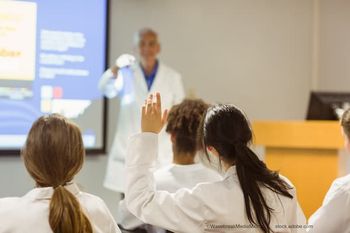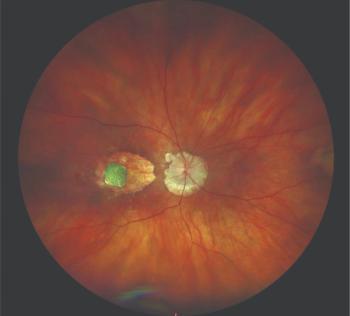
Novel polymers show potential as alternative to sutures
Durham, NC—Experiments performed to date with novel biodendrimer adhesives suggest that this technology has promising potential for use in the repair of corneal wounds.
Biodendrimers are three-dimensional, highly branched macromolecules composed of monomers that are biocompatible, biodegradable, and able to be chemically modified to functionalize them for clinical use. Speaking at World Cornea Congress V and the annual meeting of the American Society of Cataract and Refractive Surgery, Washington, DC, Terry Kim, MD, co-investigator of the biodendrimer technology, and C. Starck Johnson, MD, described results achieved in testing performed in vitro and in a live chicken model using a laser-activated sealant for closing linear and stellate corneal lacerations. In a recent publication [J Cataract Refract Surg 2005;31:1208-1212], Dr. Kim and colleagues reported on the efficacy of a laser-activated bioadhesive and a self-gelling compound for sealing LASIK flaps in eye bank eyes.
"Everyone is familiar with the disadvantages of sutures, and currently available sealants, such as cyanoacrylate and fibrin-based glues, have drawbacks as well. These novel biodendrimer adhesives are easy to use, biocompatible, transparent, soft and smooth-textured, and have demonstrated favorable sealing qualities so far. There is a range of potential opportunities for using these sealants, and we hope they will find use in clinical practice as an alternative to conventional sutures," said Dr. Kim, associate professor of ophthalmology, Duke University School of Medicine, Durham, NC.
An early study performed at Duke University using eye bank globes demonstrated that a laser-activated biodendrimer adhesive offered good tensile strength [Arch Ophthalmol 2004; 122:867-870]. In that investigation, 4.1-mm, full-thickness linear incisions and 3 × 4-mm, full-thickness stellate incisions were made in two groups of eyes and then sealed either with the biodendrimer adhesive or sutures. Leakage pressures for both repair methods indicated they would allow the globes to withstand physiological increases in IOP. However, mean leakage pressure was significantly higher in the adhesive-sealed group compared with the sutured group for both the linear incisions (109.6 versus 78.7 mm Hg) and the stellate incision (78.7 versus 57.8 mm Hg).
Establishing feasibility in vivo
White leghorn chickens were chosen for in vivo preclinical testing because their corneas are similar to those of humans in terms of protein type, ultrastructure, and the presence of an intact Bowman's layer. That study compared clinical and histologic responses of 4.1-mm, full-thickness central corneal incisions treated with an argon laser-activated biodendrimer sealant or closed with three interrupted 10-0 nylon sutures. The wounds were Seidel-tested after repair, and were reevaluated with Seidel testing and slit-lamp exam after 6 hours, then daily for 7 days, and weekly for 3 weeks. In addition, histologic assessments were performed using corneas obtained from animals killed on days 1, 3, 7, 10, and 28.
Newsletter
Don’t miss out—get Ophthalmology Times updates on the latest clinical advancements and expert interviews, straight to your inbox.





